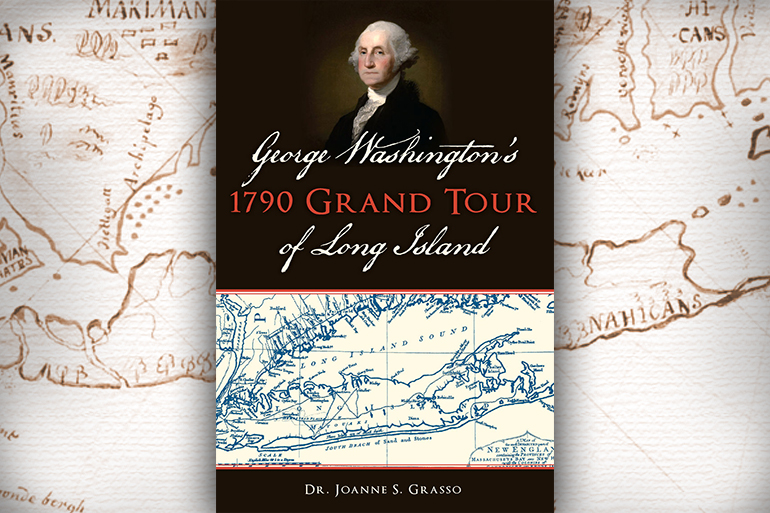Book Review: 'George Washington’s 1790 Grand Tour of Long Island'

For more than 20 years Arcadia Publishing has reconnected people to their community, their neighbors and their past by offering a curbside view of hometown history and forgotten aspects of American life. In honor of President’s Day today, we’re taking a look at Dr. Joanne Grasso’s George Washington’s 1790 Grand Tour of Long Island, published by Arcadia in July of 2018.
This fascinating chronicle of local history, as it relates to a visit from one of America’s most revered heroes, examines the five days George Washington spent touring Long Island in April of 1790. In the book’s introduction, Grasso—a Long Islander herself and adjunct associate professor of history and political science at the New York Institute of Technology—discusses the state of the Island at the time. Following the disastrous Battle of Long Island (also known as the Battle of Brooklyn), Long Island spent the entirety of the Revolutionary War under British occupation. As the war neared its end and American victory loomed, most British loyalists fled the Island, taking their money and slaves with them, leaving it an economically depressed place, decimated and in debt, much like the rest of the fledgling country.
In the years between the end of the Revolution in 1783 and Washington’s inauguration in 1789, the new United State of America, loosely tied together by the Articles of Confederation, were in near constant turmoil—from the $70 million debt (for context, a pound of beef cost 4 cents that year), to the Newburgh Conspiracy, Shay’s Rebellions and various regional disputes. By the time of Washington’s visit—the first time he’d been to Long Island since his miraculous escape in 1776—the towns and cities here were just beginning to experience new growth and prosperity.
This book, Grasso notes, is not simply a travelogue or a tour book of historic Long Island. “Through a combination of diaries, letters and accounts, it’s a scholarly attempt to depict the movements of the first president,” the author explains, pointing out that 1790 was a “transitional period” for Washington.
She begins with a description of 1790 New York City, then the capital city of the newly-formed country. From there she follows Washington’s path, traveling as far as Patchogue on the southern shore, and Setauket, home of the Culper Spy Ring, on the Island’s north side. As most of the places Washington visited are no longer extant, many photographs are of plaques noting the places he passed through: Hart’s Tavern in Patchogue, the Green House in Sayville, Roe Tavern in Setauket, and so on. The book ends with several appendices, including the full text of the diary Washington kept during his tour.
This is well worth a read for lovers of local and American history, expanding upon what might otherwise be a footnote in a less thorough tome. Look for George Washington’s 1790 Grand Tour of Long Island at your local bookstore or find it online.
Learn more at arcadiapublishing.com.



